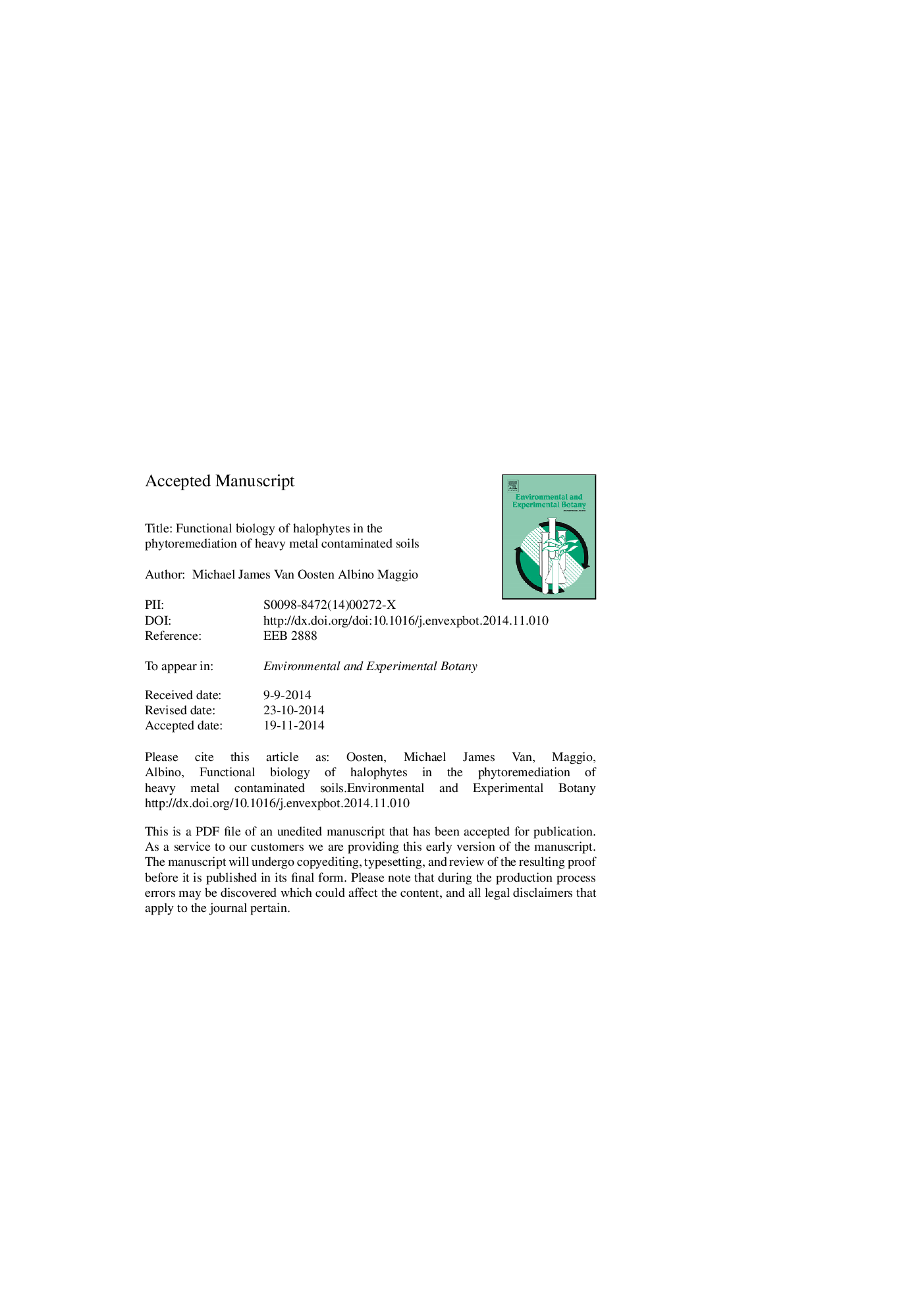| Article ID | Journal | Published Year | Pages | File Type |
|---|---|---|---|---|
| 6388855 | Environmental and Experimental Botany | 2015 | 57 Pages |
Abstract
Halophytic plants are characterized by their ability to survive, even thrive, at concentrations of sodium and chloride ions that would be toxic to most crop species. Given the diminishing prospects for the availability of fresh water for agriculture, halophytes represent an important resource for both our understanding of the fundamental physiological mechanisms in salt stress adaptation and utilization of saline waters for agriculture. Mechanisms of adaptation that allow halophytes to survive high salt concentrations may be not exclusive to sodium and chloride and may confer tolerance to other toxic ions, including the loosely defined family of heavy metals. It has been recently shown that a number of these halophytes do indeed have ability to accumulate heavy metals or tolerate high levels of toxic ions in the environment. These abilities make some halophytes excellent candidates for phytoextraction and phytostabilization of heavy metals in contaminated soils. This review addresses the general deleterious effects of heavy metals in plants, present known mechanisms of adaptation to heavy metal stress in halophytes and discusses the potential of halophytes for phytoremediation of contaminated soils. Considering the multifaceted potential of halophytes for biomass production in marginal and/or extreme environments, their potential role in the broader context of agriculture and food security should be further explored.
Related Topics
Life Sciences
Agricultural and Biological Sciences
Ecology, Evolution, Behavior and Systematics
Authors
Michael James Van Oosten, Albino Maggio,
